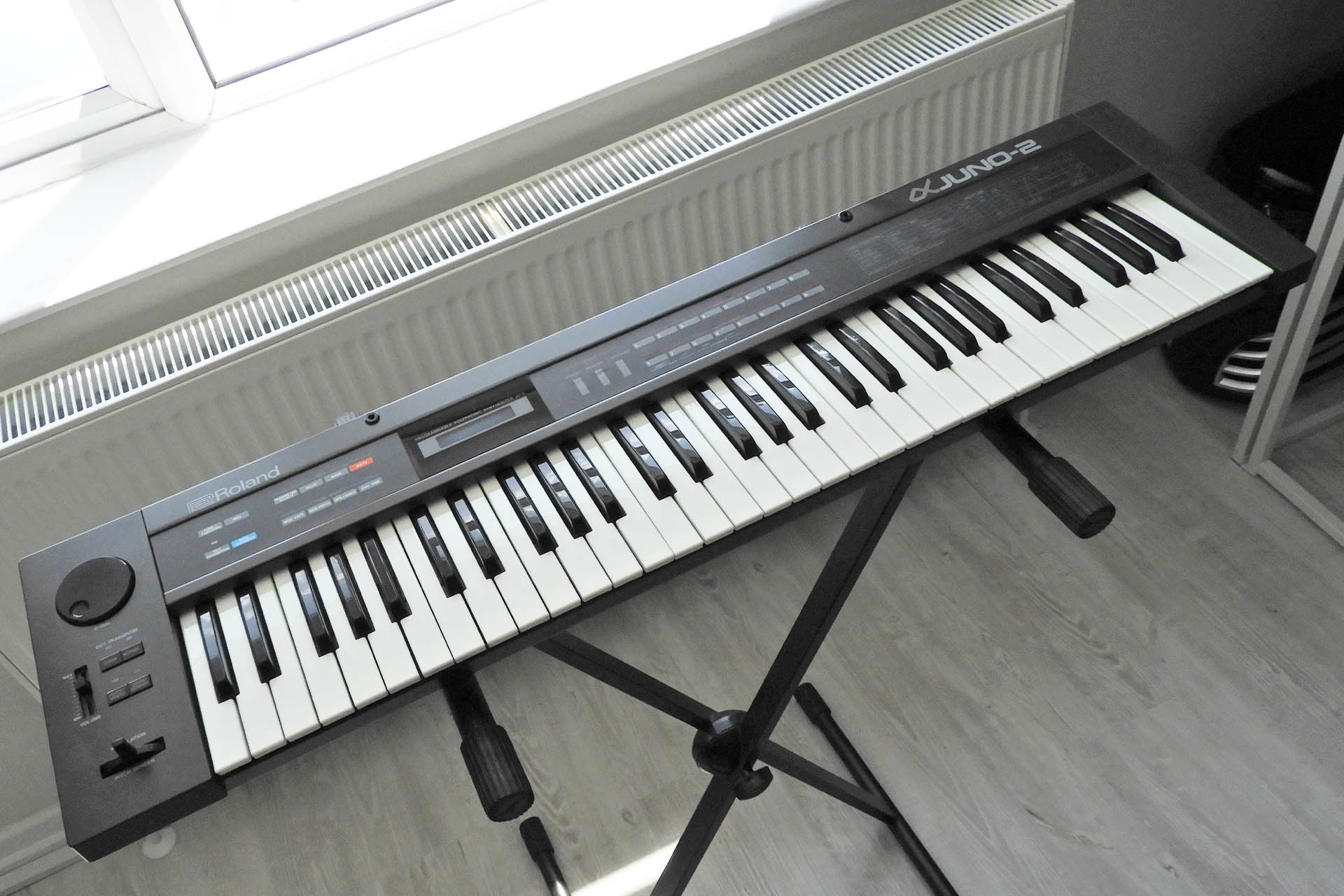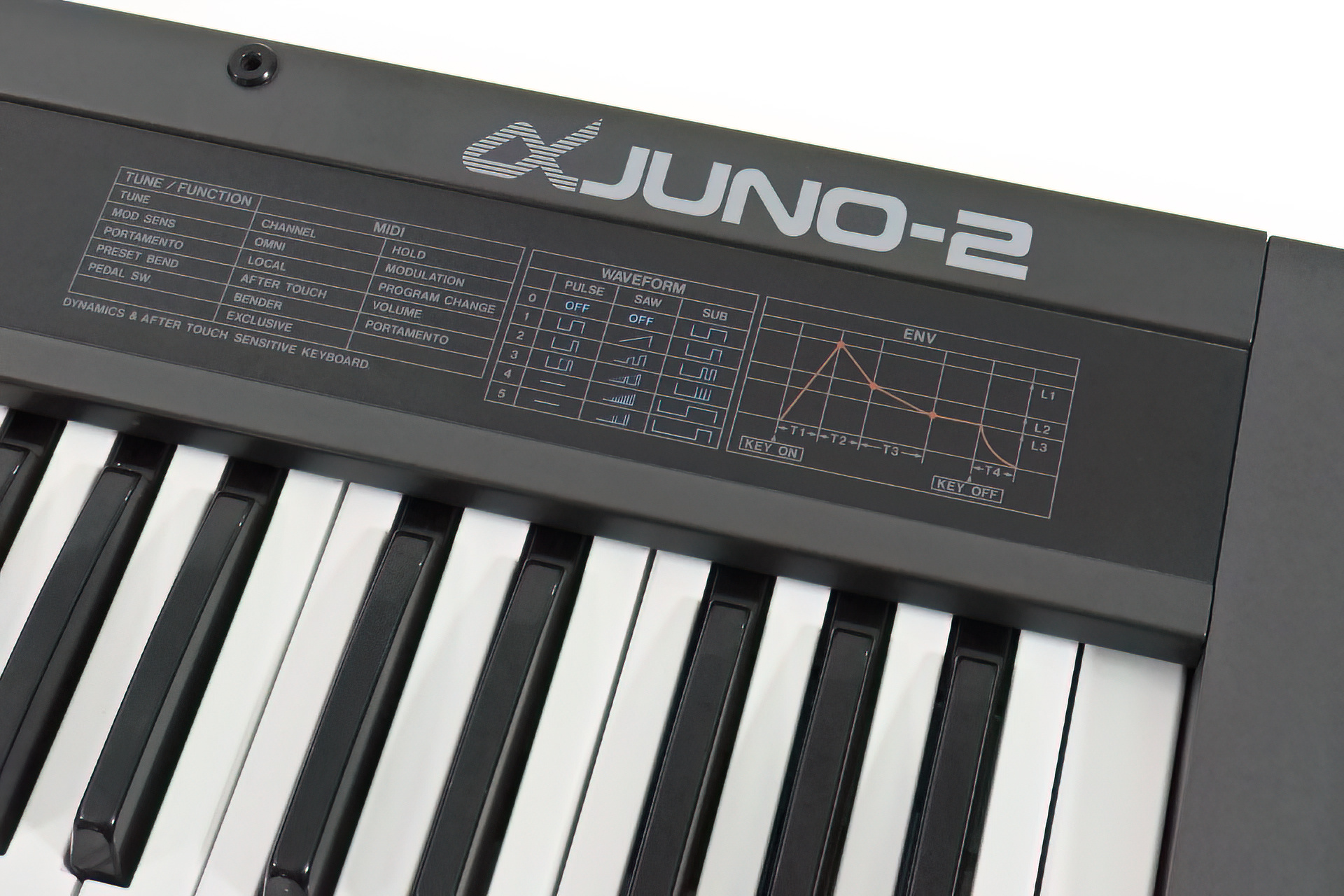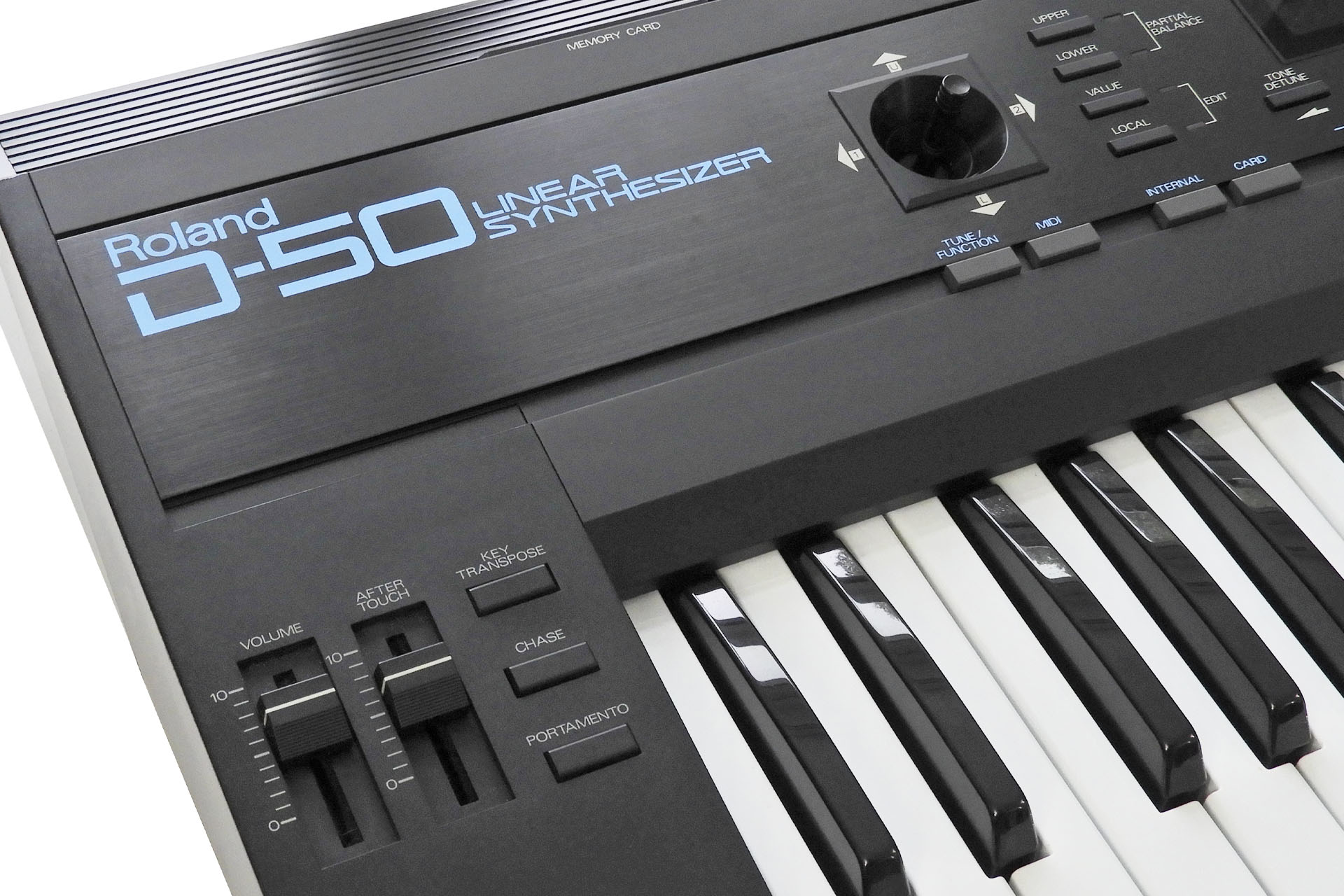Being able to convey feel to the sound after the keys are played, can transform a performance into something quite unique and almost magical. Indeed, Roland was definitely on to something when aftertouch began appearing on it’s synthesisers in the mid-eighties. Today, many classic synthesisers have aftertouch strips that either don’t work or are a shadow of what they used to be. Almost forty years later, my Roland Alpha Juno 2 replacement aftertouch sensor which uses modern FSR technology, has considerably more dynamic range and is infinitely more reliable than the second-generation transducers that Roland originally used in the AJ-2 and transcends the instrument into another dimension.
A couple of months ago, I received two Roland JX-8Ps with amongst other issues, failed aftertouch sensors. It was a great opportunity for me to try out something I've been meaning to do for a few years now. In no time, I'd developed a force sensitive resistor (FSR) based aftertouch system for the JX-8P. My friend Guy Wilkinson then lent me his JX-10 and 'AT-JX-10' appeared a couple of weeks later. After launching these products, something unexpected happened; I got contacted by a few AJ2 owners asking if I had considered developing a Roland Alpha Juno 2 replacement aftertouch sensor. Well, I hadn't but hey, here it is! 🙂
Roland launched the Alpha Juno 2 a year or so before I joined the company in '86 / '87 but like most music tech' at the time, instruments like the MKS-80, Juno-106, JX-8P and JX-10 were the ones that seemed to pop my eyes. As such, I never paid much attention to the Alpha Junos until many years after I'd left the company.
Today, the Alpha Juno 2 is a much respected synthesiser which has also proved to be very reliable... apart from the aftertouch. It was kind of a no-brainer therefore, to sort this out, especially following on from the success I'd recently had with the JX-8P and JX-10 replacement aftertouch sensor projects. There was only one problem; I didn't have a Roland Alpha Juno 2. 🙁
The development costs of designing peripherals for vintage equipment can be considerable and I was reluctant in this case, to whack on a good sum for a second-hand AJ-2. Having said that, I very almost did. But then...
Jumping to the rescue, my friend Guy Wilkinson suggested he contact a friend of his, who's an Alpha Juno 2 owner and indeed Jonathan was only too happy for me to use one of his his synths as a test bed. Yes, Jonathan has two Alpha Juno 2s!
So now I had a Roland Alpha Juno 2 but...
You need to be careful when taking apart an Alpha Juno 2 because the front of the main-board isn't simply screwed to any part of the chassis. Instead, Roland decided to have it supported in slots underneath the keyboard chassis. Removing the keyboard chassis without knowing this and hence, taking precautions, could easily snap the main-board! 🙁
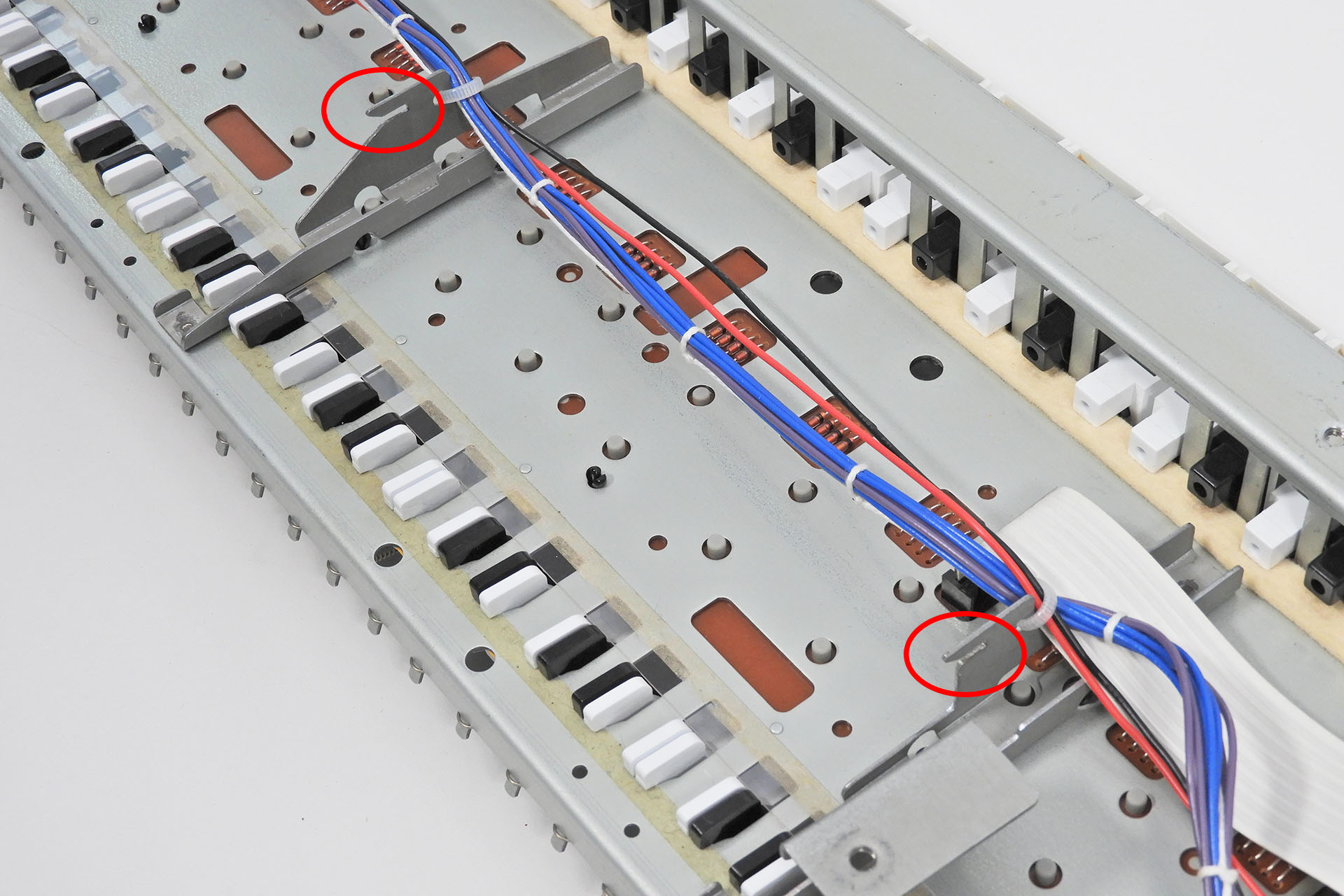
The original aftertouch strip looks kinda FSRish but it's not. Similar to the sensor found in other synthesisers at the time, it's simply a couple of plastic strips with carbon tracks sandwiched together.
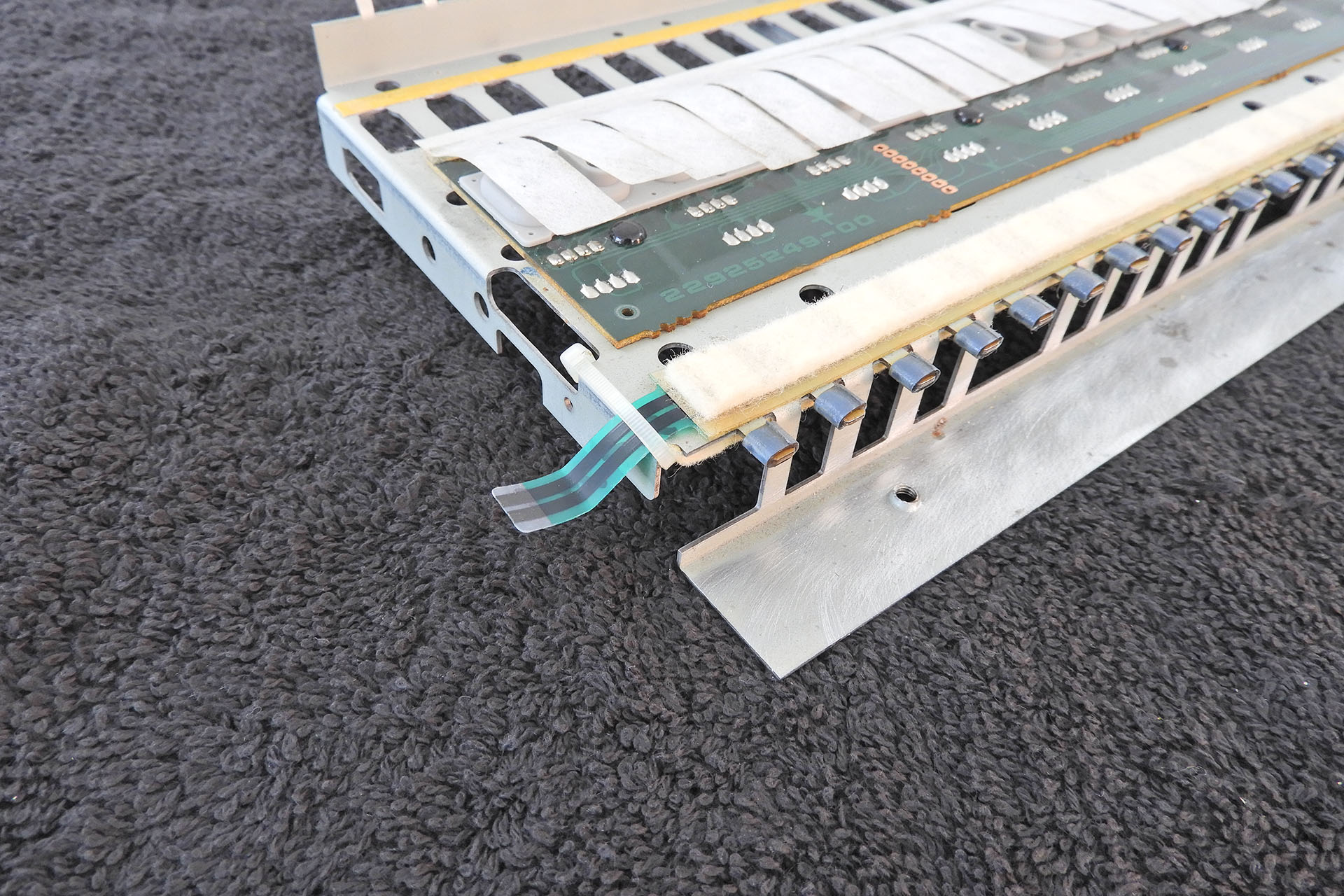
Being basically refined versions of the type of carbon-track sensors that Roland originally used but delivering a lot more dynamic range as well as other benefits, FSRs are perfect for this kind of application. In fact, modern aftertouch sensors and even some drum pads use FSRs. The principle is the same but the resistive polymer material is of a modern composition and the manufacturing process makes FSRs considerably more robust and reliable than previous pressure sensors.
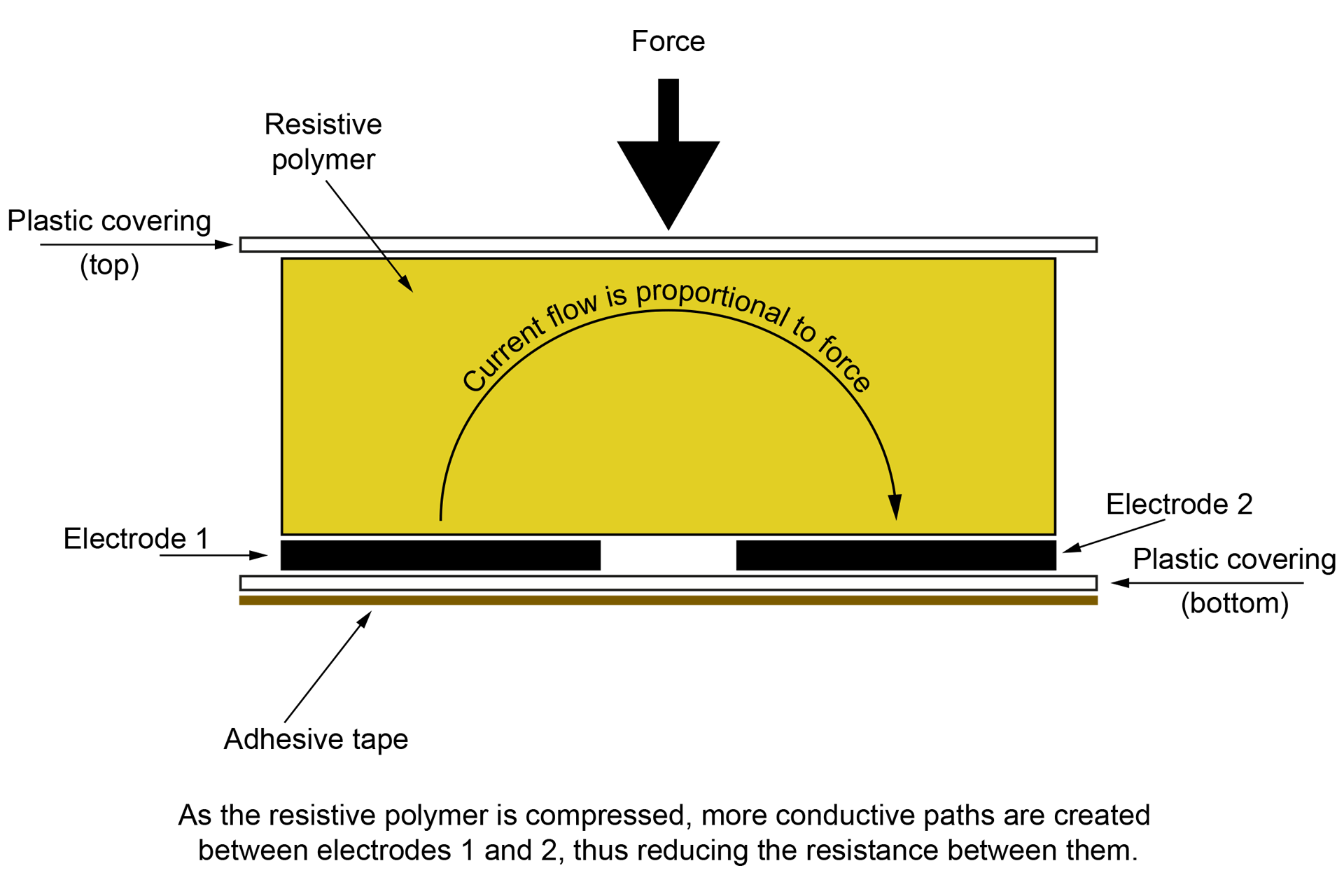
CONFESSION TIME
Okay, so this post is dated 29th June 2023 but today 29th October 2025, it's been updated. Why? Well, although amazingly successful, there were aspects of my original design that I wasn’t particularly happy with:
- My original AT-AJ-2 was shipped fully assembled and making such a large item with some precision was challenging.
- Packaging was time consuming and shipping required bespoke cardboard boxes, due to the size.
- Although only weighing a couple of hundred grams, shipping costs were high, again due to the fact that the item was shipped fully assembled and was therefore, quite long.
- The terminals of the FSRs are delicate so careful handling was necessary, both by me and the installer. This was made more difficult because the item had to be kept straight.
- The original AT-AJ-2 was expensive to make and also expensive to ship.
My new AT-AJ-2 Mk II replacement aftertouch sensor for the Roland Alpha Juno 2 is NOT technically superior to my original design. It just ticks all the issues highlighted above.
After investing in a 3D printer last year for another project, I realised the potential and contemplated converting my AT-JX-10 into a modular kit, which I felt would be cheaper and much easier for customers to install. Instead of using a single rubber strip as the mounting platform for the FSRs, I experimented with a plastic bed . Of course, it wouldn’t be easy printing a strip of plastic over a meter long so I considered a modular approach.

Despite my best efforts, I haven’t been able to get a manufacturer to supply me with single-piece FSRs in the lengths that I need for my replacement aftertouch sensors. Hence, all my aftertouch systems use two readily available FSRs. Previously mounted on to a rubber strip, they’re now mounted on to a set of five (in the case of the JX-10) plastic FSR bed strips. Four of the strips are identical and can actually be used in all of my designs with the exception of the AT-JX-8P (because it's higher and wider). The fifth FSR bed strip is specific to the instrument that the respective system is destined for. This allows me to keep things standard but also cater for varying keyboard sizes.
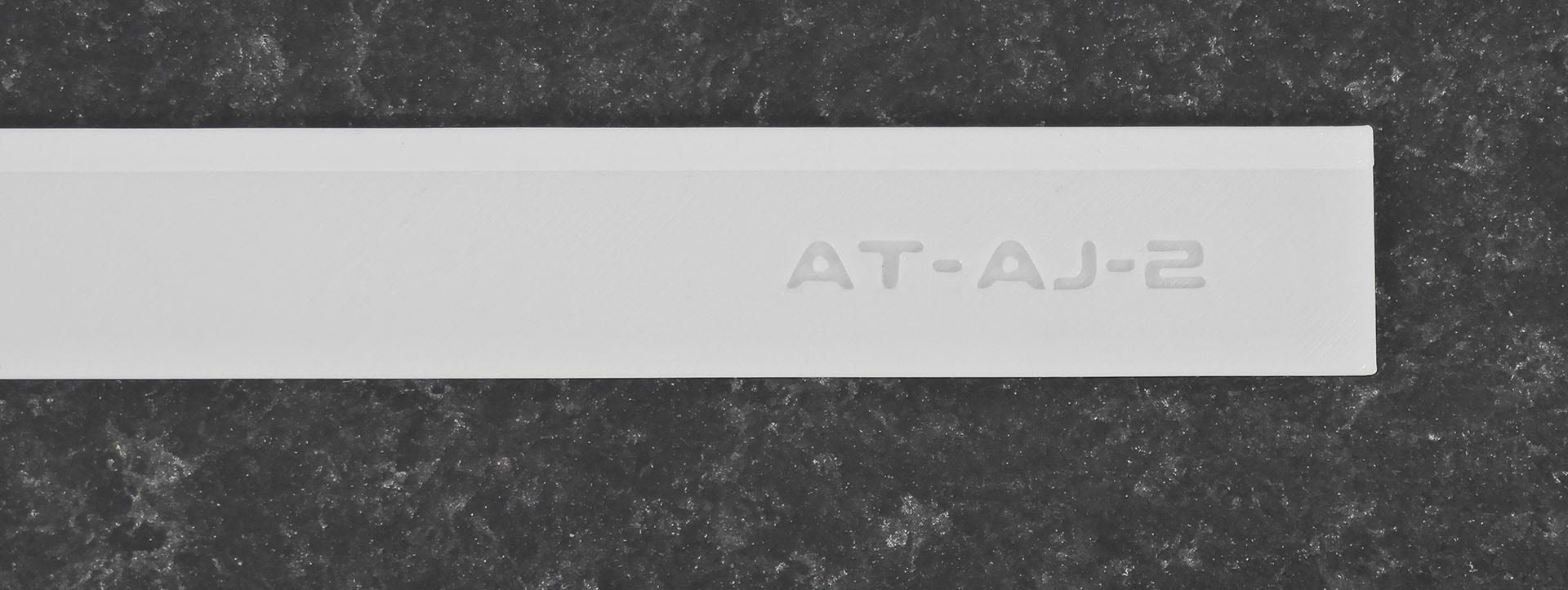
Designed to make alignment of the system a lot easier than my previous design, installation is much more straight-forward and less prone to ‘human error’.

The 'common' FSR bed pieces are 220mm long which means that they can be packed into something much smaller than my original bespoke shipping box. AT-AJ-2 Mk II is supplied with a few plastic strips that make lining up the FSR bed much quicker, easier and reliable than my old rubber strip.
Wow, this was amazing! My new AT-AJ-2 Mk II worked just like my original design but assembly time was greatly reduced, I could pack this kit into a box half the size of that I was using before and installation time was also a fraction of that needed to install my AT-AJ-2 Mk I.
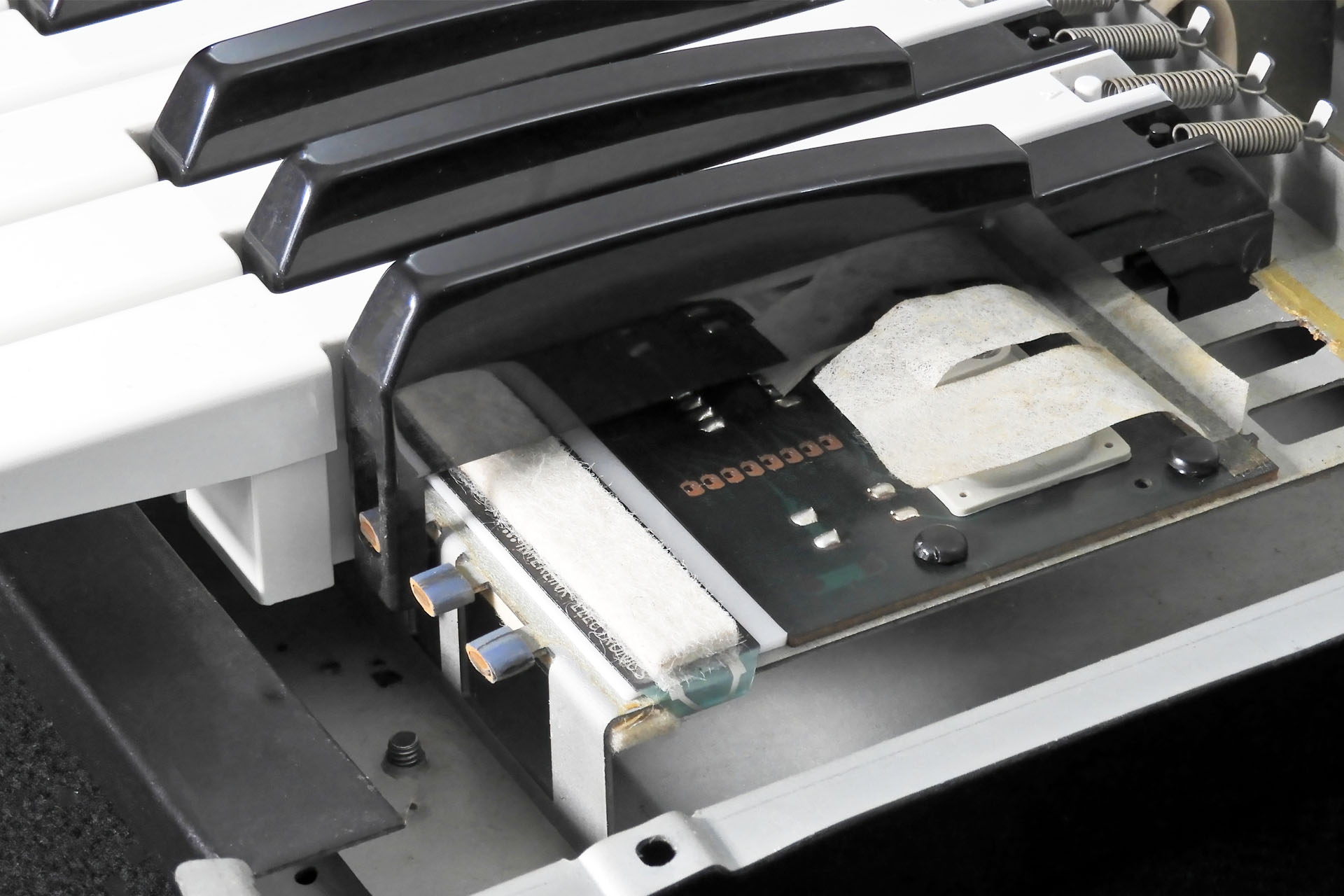
I’m a musician too and I’m not insensitive. Supplying my original design fully assembled, made things very expensive. My new modular approach allowed me to reduce the price of my AT-AJ-2 by 25%. That’s a significant saving.
Although my AT-AJ-2 replacement aftertouch sensor for the Roland Alpha Juno 2 will work if connected directly to the volume-board. the aftertouch control on the AJ-2's front-panel, will have a very short travel due to the higher output produced by the FSRs and the high gain of the aftertouch op-amp in the AJ-2. Most will find the whole system too sensitive.
The ATAJ-2 replacement aftertouch sensor for the Roland Alpha Juno 2 is therefore supplied with a FSR Aftertouch Interface (or FAI).
Apart from passively summing the outputs of the two FSRs, FAI offers a little extra... You see the gain of the op-amp stage that buffers and amplifies the signal from the the aftertouch sensor, was designed for a carbon track type sensor. By removing a single resistor and connecting FAI, things take on a new dimension offering you switchable aftertouch sensitivity ranges!
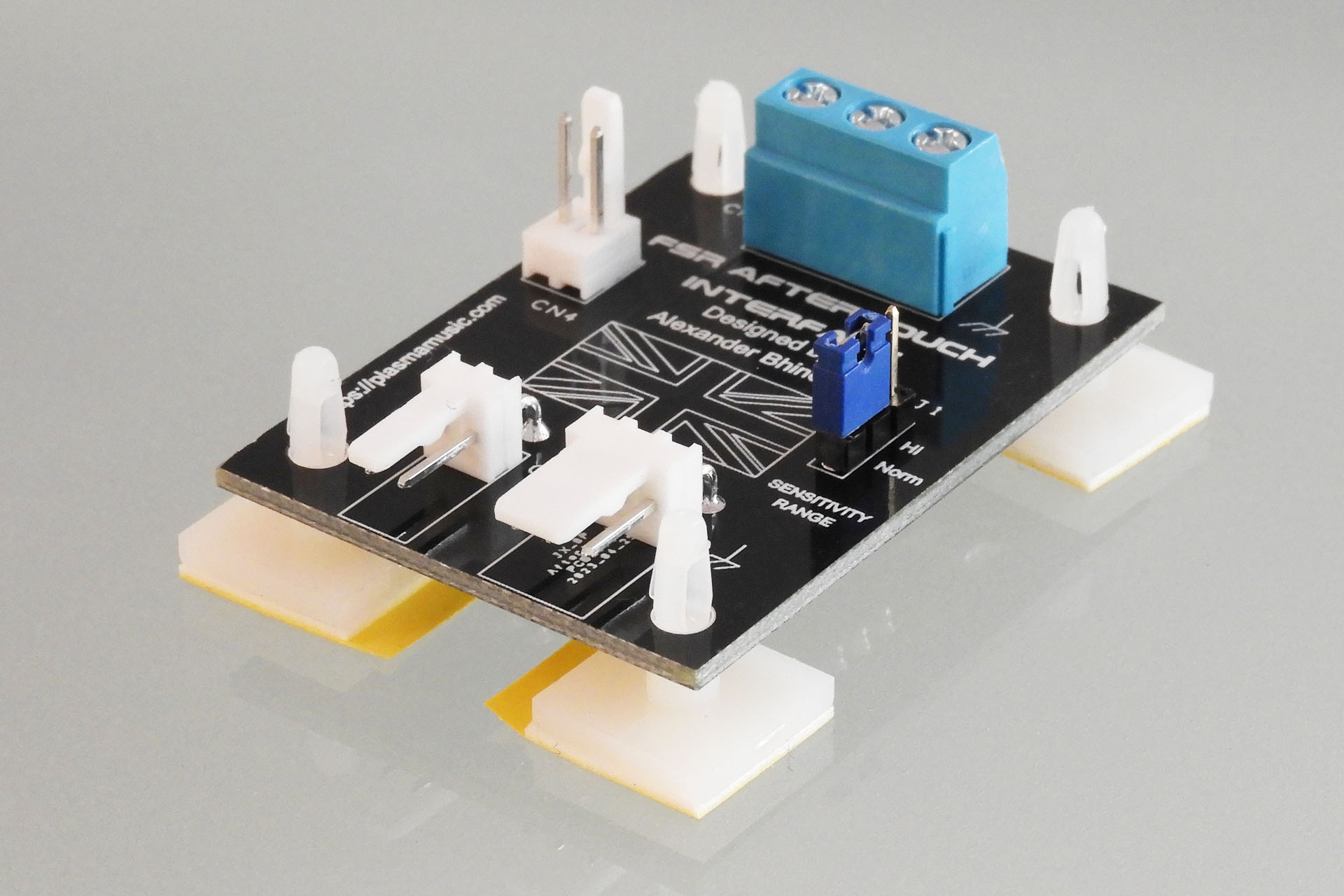
By simply moving a jumper on FAI, you can change the gain of the aftertouch op-amp stage.
Listening to the results as I experimented was bordering on hypnotic. You see, FSRs have considerably more dynamic range than the second-generation carbon-track transducers that Roland originally used in the AJ-2. The conversion of human touch to sonic expression delivered by the new FSR-based system, is perhaps what Roland actually wanted to achieve back in the mid-eighties. Decades later, it's finally arrived and even although I say so myself, the feel is absolutely magical and in a different league to anyAJ-2 working aftertouch that I've tried.
I had to be sure however, that the MIDI response was also good. When I recorded the results into Cubase and took a look, I was pleasantly surprised.
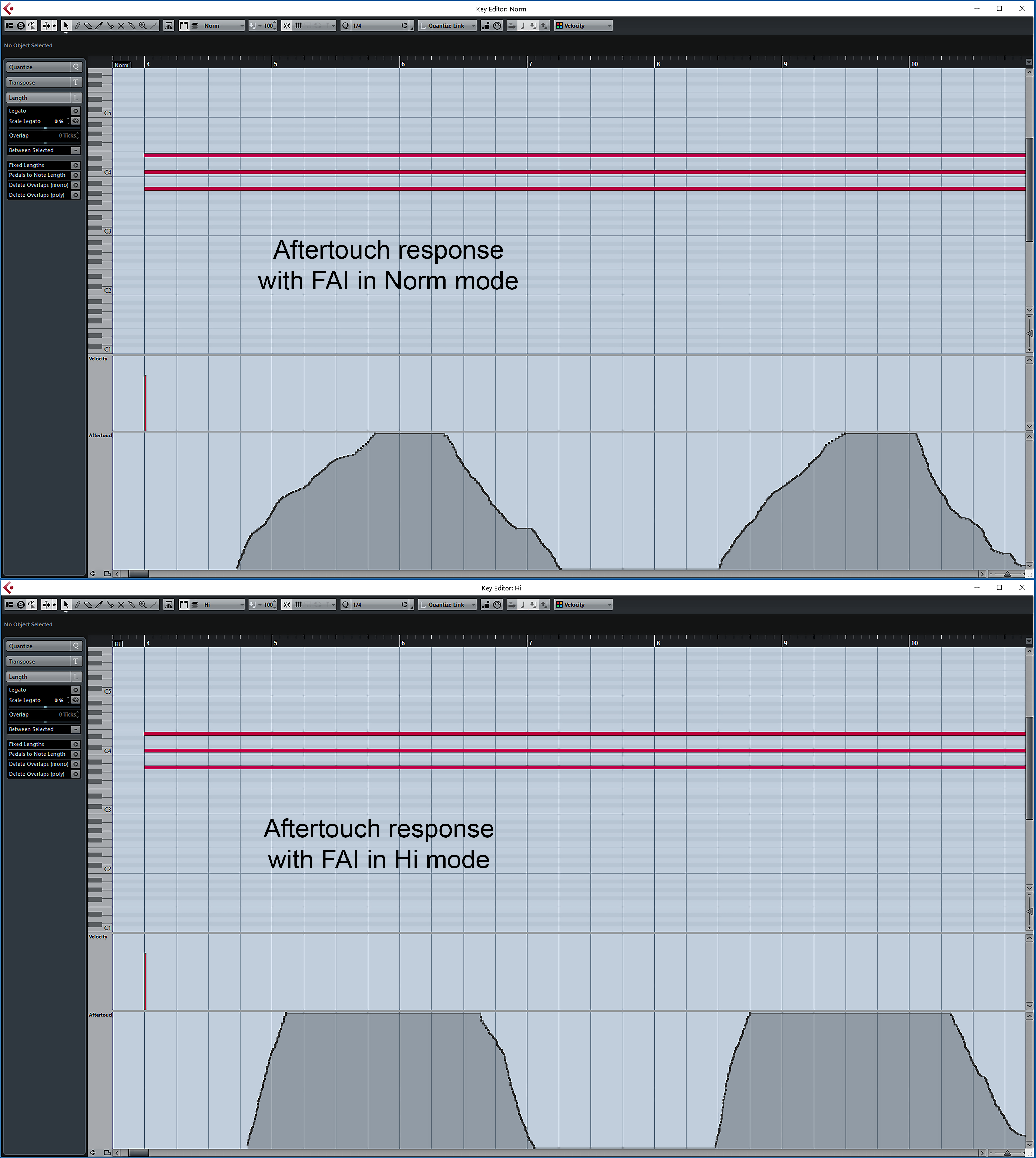
In the AJ-2, aftertouch can be assigned to DCO, VCF or VCA and you have scope for further adjustment of the affect of aftertouch on the respective parameter.
Like all of my replacement aftertouch sensors, the AT-AJ-2 employs two FSRs and it's not practical to simply connect them to the original aftertouch wires and so FAI also makes life easy by passively combining the signals off the FSRs.
Although quite small, again with limited space inside the chassis, the positioning of FAI had to be carefully considered. FAI couldn't go behind the pitch-bend assembly like my AT-JX-8P and AT-JX-10 installations.
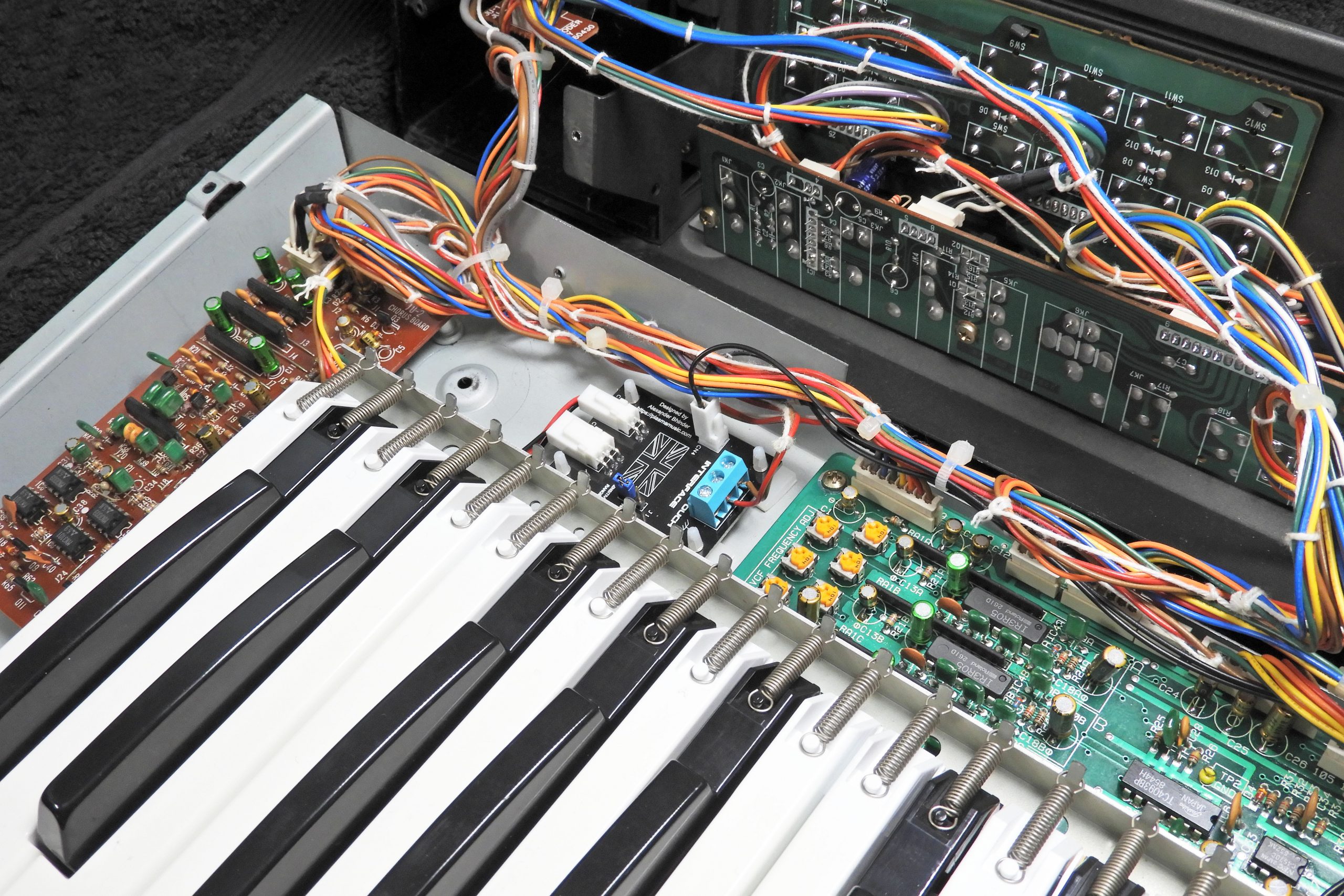
Different to previous FSR-based aftertouch projects, designing and installing my AT-AJ-2 presented some unique and interesting challenges. It wasn't quite the 'walk-in-the-park' I thought it would be, that's for sure. The Alpha Juno 2 was for example, particularly fussy about the height of its aftertouch strip. Having already designed a couple of FSR-based replacement aftertouch sensors, the height of the whole sensor assembly is of course, one aspect I pay a lot of attention to. If the sensor is too high, when a note is pressed, contact with the second carbon nipple in the contact bubble might not happen and you'll get no sound. If the sensor assembly is too low, you'll potentially wear out the key contacts quicker. Seriously, a fraction of a millimetre can make a significant difference.
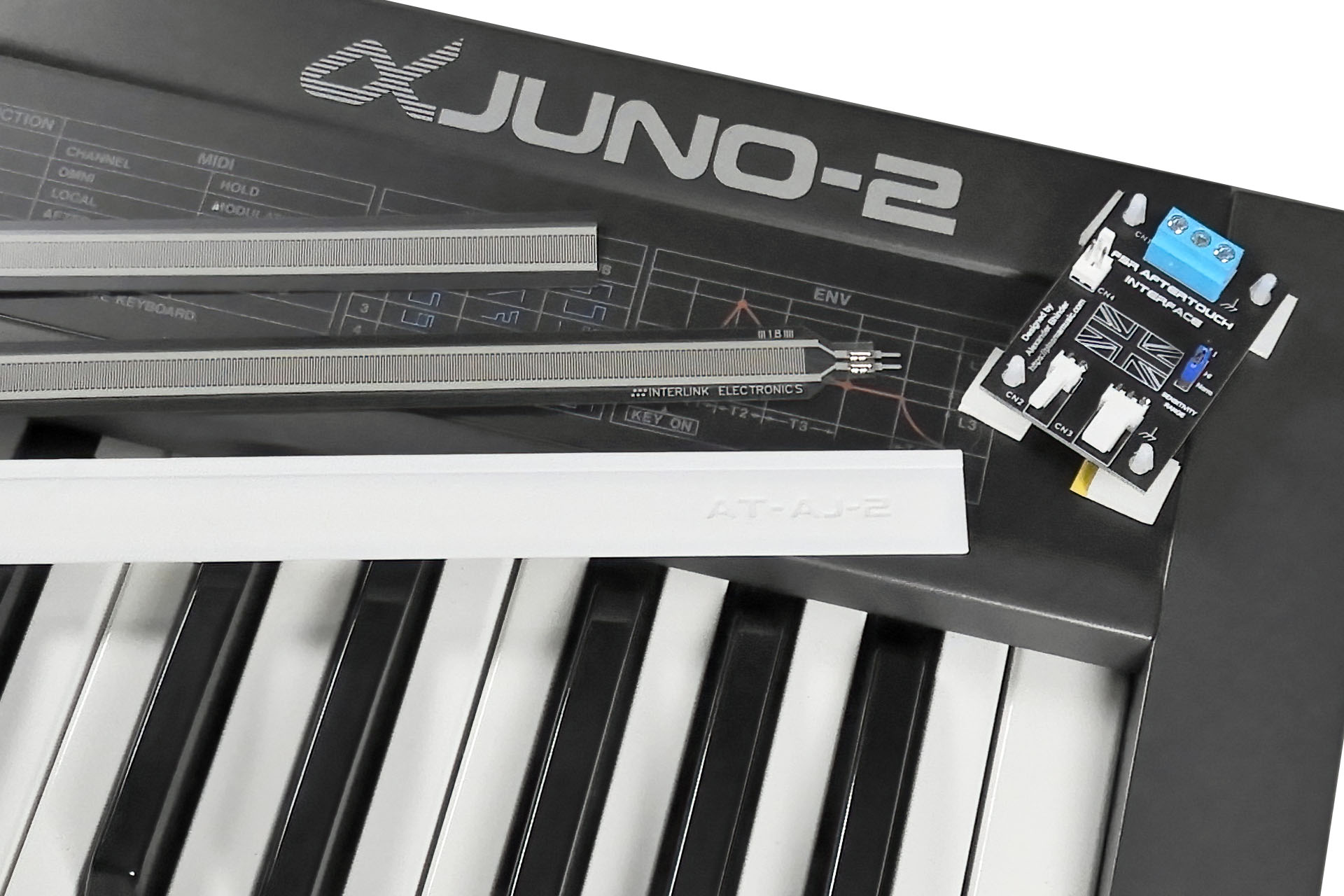
Wanting this system to be available to all AJ-2 owners however, meant that not only did I have to overcome these challenges but I had to do so in a way that any technically competent person could easily follow. Operating on vintage synthesisers requires patience and an appreciation of how the manufacturer did things back in the day. You can't just take things for granted!
"So what does my Roland Alpha Juno 2 replacement aftertouch sensor sound like?"
Well, that's actually the wrong question! With a dynamic range that's quite literally in a different league to the second-generation transducer that Roland used in the Alpha Juno 2, my AT-AJ-2 feels just magic! The new system delivers a conversion of human touch to sonic expression that is perhaps what Roland had in mind in the mid-eighties but was unable to realise at the time.
If you want to know more about the fabulous Roland Alpha Junos, then you might find this interesting reading.
If you just want to buy my AT-AJ-2 replacement aftertouch sensor for the Roland Alpha Juno 2, you can do so here...
UPDATE - 10th July 2023
Yesterday my friend Guy Wilkinson came to see me to collect Johnathan's Alpha Juno 2 and to catch up about a whole bunch of other stuff. Not knowing too many people who speak my language, it's great having Guy over. When we meet up, it kind of gets a bit geeky 😀 but it's so much fun!
Anyway, Guy messaged me later in the evening with a link to his home page. Here's what he had to say:
"Repeat 9th July 2023: Alex did it again for the Alpha Juno 2, such a sublime upgrade because the synth is such a lovely sounding and traditional polysynth (less is more)……a great Aftertouch performance really makes it shine expressively. I have spent a lot of time with it, enjoying the synth in a new way. Shame I have to hand it back 😁
If you are interested in one of these fabulous kits with an extremely long life modern sensor, then check out Alex’s site pages: JX-10 , JX-8P & Alpha Juno 2.
Bring the expression back into your Vintage synthesizer."
Thank you for your kind words, Guy.
A special T H A N K Y O U to Jonathan W for lending me his Roland Alpha Juno 2.
UPDATE - 28th July 2023
My AT-D-50 FSR-based replacement aftertouch sensor for the D-50 is a go! You can read all about here.


